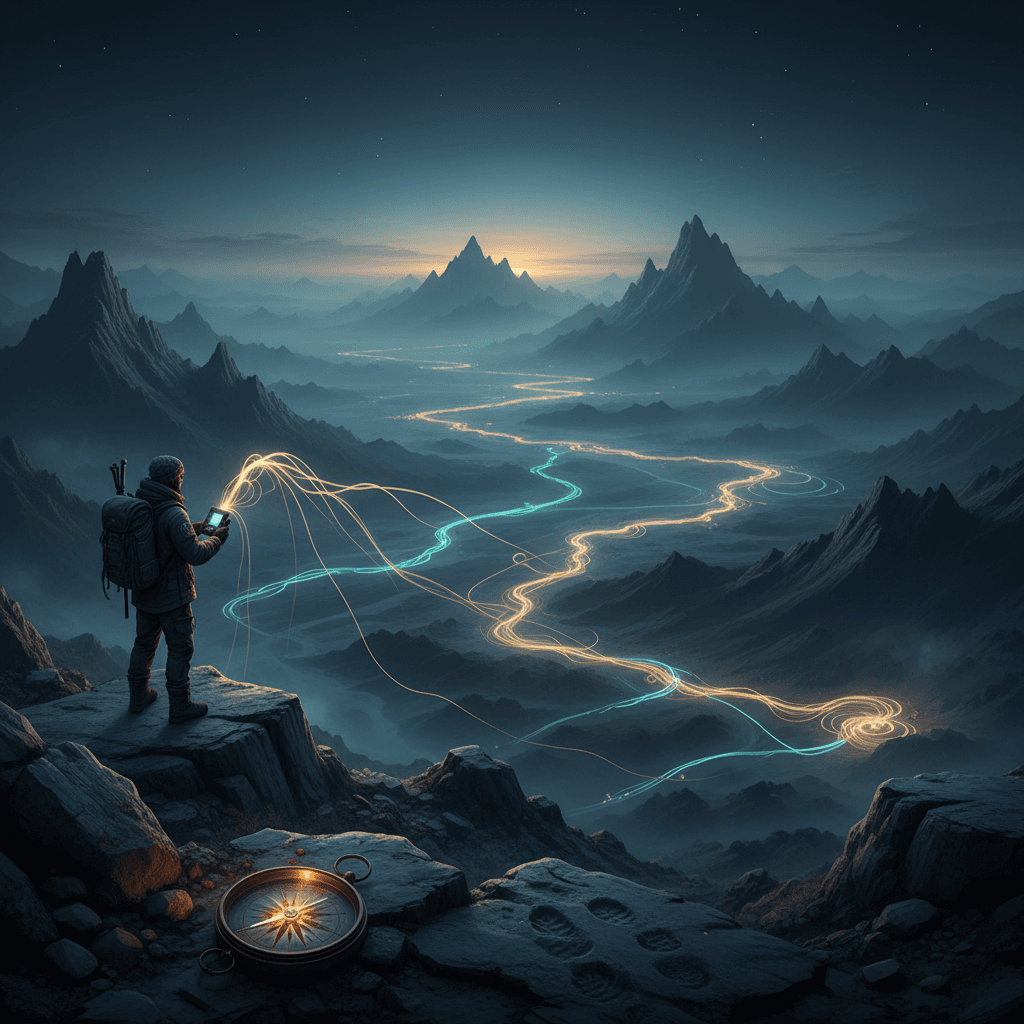Boldness Draws the First Maps of Tomorrow

Boldness writes new maps where none existed before. — Kahlil Gibran
A Metaphor of Uncharted Territory
Gibran’s line lifts cartography into the realm of character: maps stand for the limits of what a person, a community, or an age imagines possible. Boldness, then, is the hand that dares to outline routes before roads exist, replacing hesitation with a line of intent. Rather than waiting for certainty, the bold act sketches a provisional pathway that others can refine, widen, and name. In this sense, courage is not reckless motion but creative authorship; it writes coordinates for future travelers to test and improve. From this vantage, human progress looks like a succession of drafts where each fearless inscription enlarges the terrain of the real.
History’s Cartographers of Courage
Historically, literal maps advanced whenever someone stepped beyond the known and returned with stories precise enough to draw. The Hunt-Lenox Globe (c. 1510) famously bears the phrase “HC SVNT DRACONES,” signaling edges where rumor outweighed knowledge. Boldness turned such warnings into waypoints: Magellan’s circumnavigation (1519–1522) transformed conjecture into coastlines, and the Lewis and Clark journals (1804–1806) threaded observations into a navigable interior. Each expedition converted risk into reference, replacing myth with measured distances, flora, and rivers. Yet the deeper lesson is transferable: the same courage that erased dragons on parchment also teaches us how to redraw invisible borders in science, art, and society.
Science as Cartography of the Unknown
Turning from seas to ideas, scientific breakthroughs are new charts of reality. Darwin’s ‘On the Origin of Species’ (1859) recast the bio-map from fixed kinds to evolving lineages, while Einstein’s 1905 papers redrew time and space as relative, not absolute. Marie Curie’s isolation of polonium and radium (1898) opened a novel territory of radioactivity, revealing forces that would power medicine and demand moral scrutiny. As Thomas Kuhn argued in ‘The Structure of Scientific Revolutions’ (1962), such shifts replace old coordinates with fresh frames, allowing anomalies to become landmarks. Thus, intellectual boldness traces contours that instruments later confirm, much as a scout’s sketch precedes the surveyor’s grid.
Innovation, Markets, and Creative Destruction
In commerce, boldness redraws value maps. Joseph Schumpeter’s “creative destruction” (1942) describes how new firms and formats replace established routes, even when the old roads are crowded. The iPhone (2007) reconfigured telephony into a handheld computing landscape, while SpaceX’s first successful vertical landing of an orbital-class booster (2015) sketched a practical path toward reusability. Such moves look reckless until they become roads others traverse. However, innovation’s cartography is selective: it privileges what is measured. Wise boldness learns to price hidden costs—labor, ecology, and trust—so the map reflects the full terrain. Which raises a subtler question: what in the mind permits or prevents these daring lines?
The Mind’s Maps and Fear’s Boundaries
Psychology shows how inner cartography guides outer action. Prospect theory (Kahneman and Tversky, 1979) finds that loss aversion overweights potential pain, shrinking the cognitive map of acceptable paths. Neuroscience locates navigation within us: place cells (John O’Keefe, 1971) and grid cells (May-Britt and Edvard Moser, 2005) organize spatial memory, suggesting that exploration literally rewires how we map the world. Fear can fence off possibilities as if they were cliffs; small, repeatable experiments widen the terrain by proving the ground holds. Because boldness can silence prudent alarms, ethics must chaperone courage—ensuring new lines signify learning, not merely audacity.
Ethics of Drawing New Boundaries
Many maps were drawn over lives already there; colonization’s charts often legitimized dispossession. Linda Tuhiwai Smith’s ‘Decolonizing Methodologies’ (1999) critiques research and exploration that extract knowledge without consent, while the UN Declaration on the Rights of Indigenous Peoples (2007) insists that mapping and resource projects honor sovereignty. Boldness worthy of admiration pairs vision with listening, integrating local knowledge so the chart reflects shared reality. In this frame, the bravest line is sometimes the pause before drawing—seeking consent, context, and co-authorship. Ethical courage ensures the road ahead is not only new but also just.
Practicing Everyday Boldness
Finally, boldness scales to daily life through disciplined experiments. Run small bets that are cheap to test but rich in learning; a ‘pre-mortem’ (Gary Klein, 2007) anticipates failure in advance, transforming fear into foresight. Share imperfect drafts early to invite collaboration, since many maps improve by many hands. Build emotional range—Barbara Fredrickson’s broaden-and-build theory (2001) suggests positive emotions expand our repertoire of actions—so curiosity can outvote caution. Then, as results accumulate, update the chart and widen the route. Thus the map grows not from a single leap but from a cadence of informed steps, each one a quiet inscription of tomorrow.